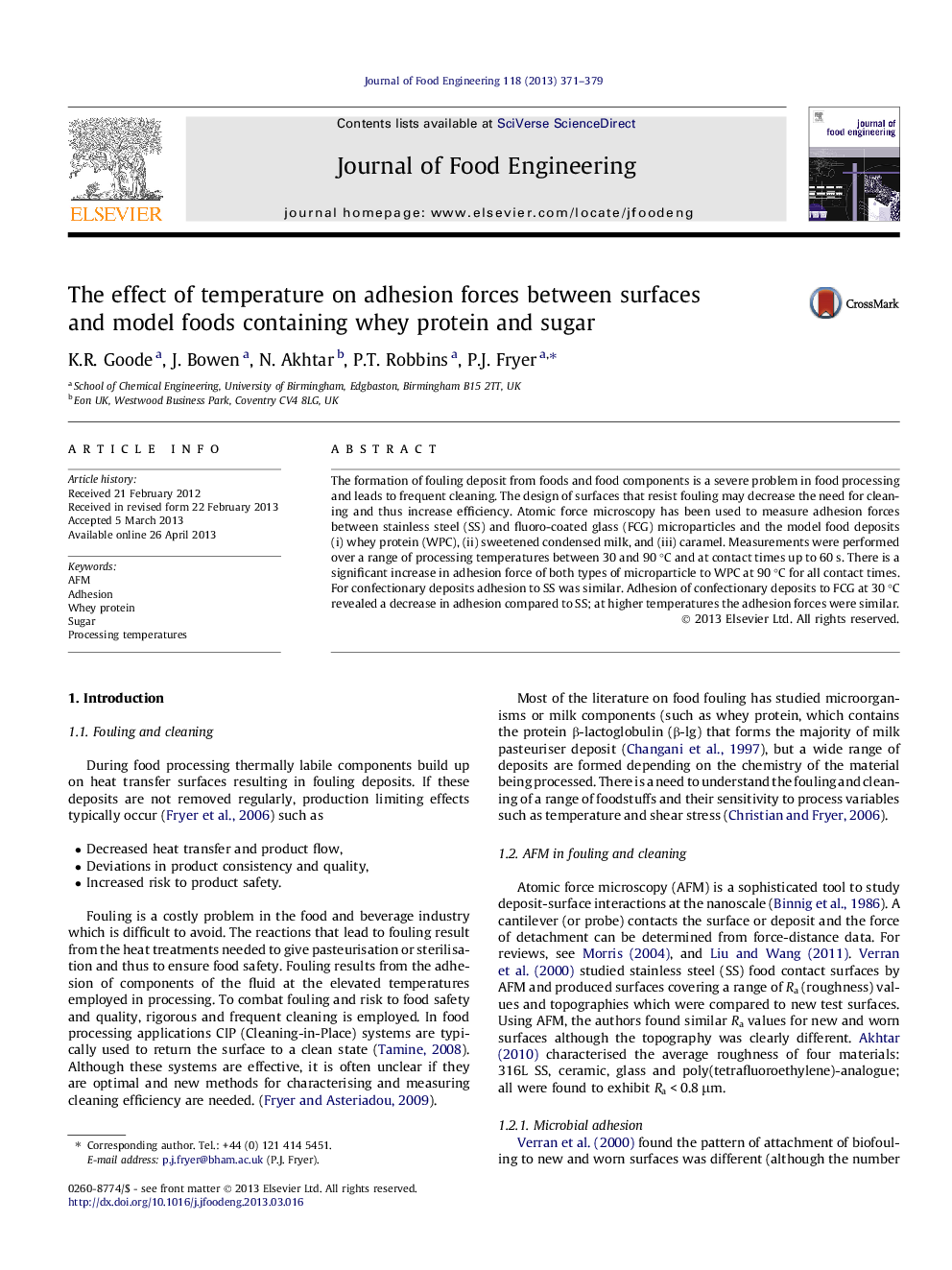| Article ID | Journal | Published Year | Pages | File Type |
|---|---|---|---|---|
| 10277617 | Journal of Food Engineering | 2013 | 9 Pages |
Abstract
The formation of fouling deposit from foods and food components is a severe problem in food processing and leads to frequent cleaning. The design of surfaces that resist fouling may decrease the need for cleaning and thus increase efficiency. Atomic force microscopy has been used to measure adhesion forces between stainless steel (SS) and fluoro-coated glass (FCG) microparticles and the model food deposits (i) whey protein (WPC), (ii) sweetened condensed milk, and (iii) caramel. Measurements were performed over a range of processing temperatures between 30 and 90 °C and at contact times up to 60 s. There is a significant increase in adhesion force of both types of microparticle to WPC at 90 °C for all contact times. For confectionary deposits adhesion to SS was similar. Adhesion of confectionary deposits to FCG at 30 °C revealed a decrease in adhesion compared to SS; at higher temperatures the adhesion forces were similar.
Keywords
Related Topics
Physical Sciences and Engineering
Chemical Engineering
Chemical Engineering (General)
Authors
K.R. Goode, J. Bowen, N. Akhtar, P.T. Robbins, P.J. Fryer,
